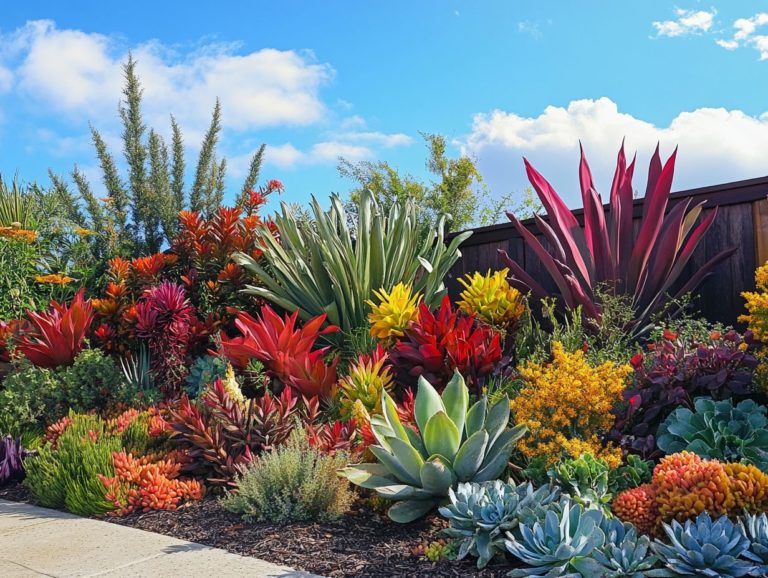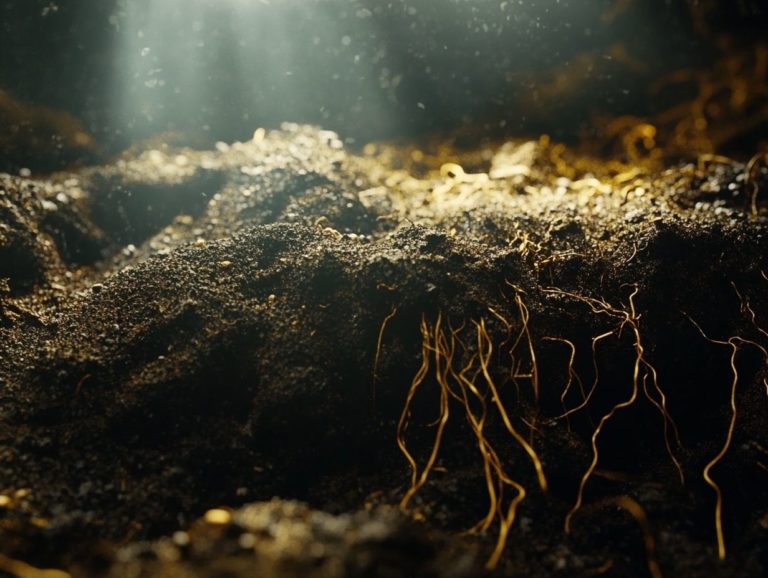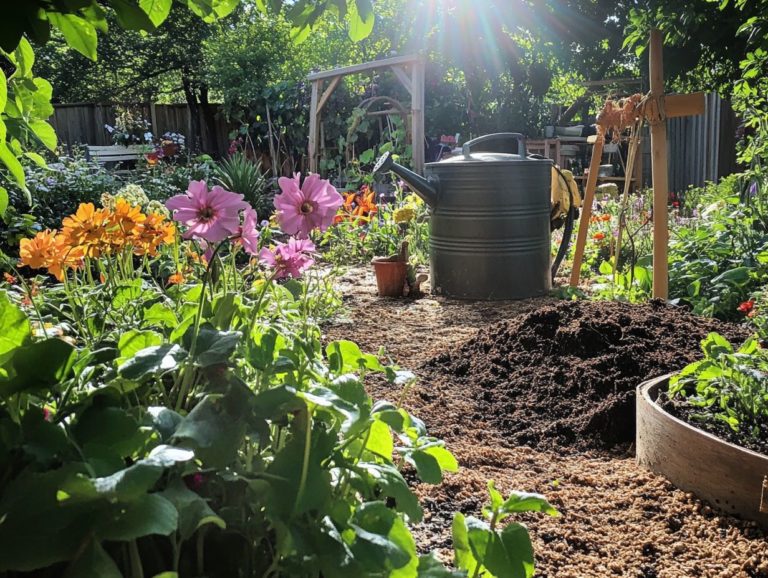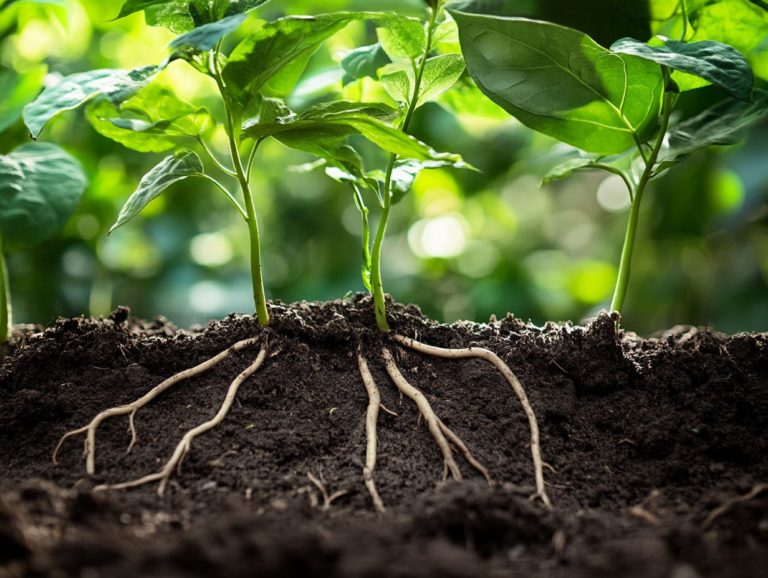Using Cover Crops in Drought Gardening
Drought gardening is gaining significance as climate change reshapes our growing seasons.
One highly effective strategy to bolster resilience is the incorporation of cover crops. These remarkable plants not only protect and enrich the soil but also play a vital role in moisture retention during arid conditions.
This article delves into the essence of drought gardening, outlining the numerous benefits and types of cover crops while providing practical tips for their integration into your garden.
Join us on an exciting journey to boost your gardening success, even in tough climates!
Contents
- Key Takeaways:
- Understanding Drought Gardening
- The Role of Cover Crops in Drought Gardening
- How to Incorporate Cover Crops in Your Garden
- Maximizing the Benefits of Cover Crops
- Challenges and Solutions for Using Cover Crops in Drought Gardening
- Frequently Asked Questions
- What are cover crops and how can they benefit my garden?
- Which cover crops are best for drought gardening?
- How do I incorporate cover crops into my drought garden?
- Do cover crops require a lot of water?
- How often should I plant cover crops in my drought garden?
- Can I use cover crops as a source of food in my drought garden?
Key Takeaways:
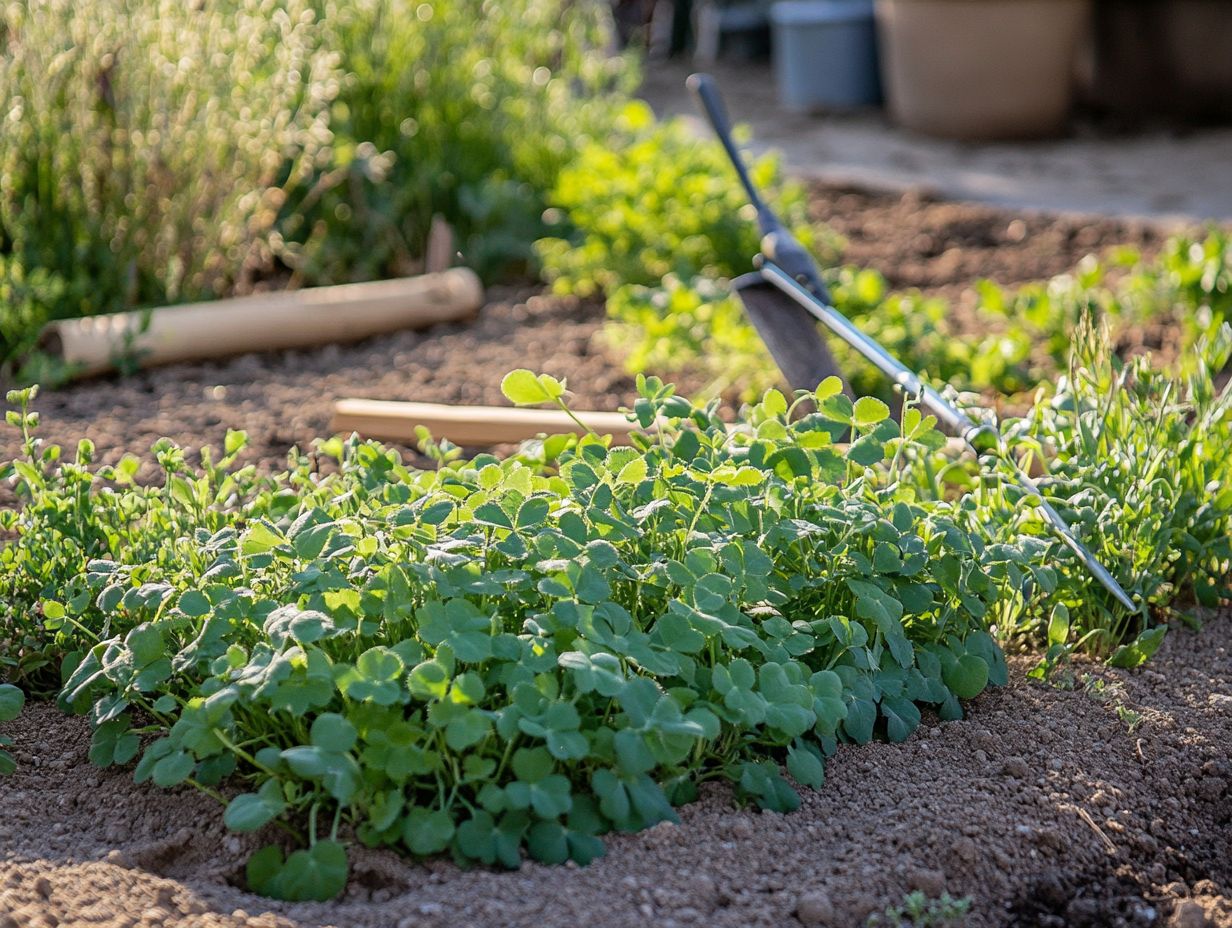
- Drought gardening is a sustainable approach that conserves water and helps plants withstand dry conditions.
- Cover crops play a crucial role in drought gardening by improving soil health, reducing erosion, and retaining moisture.
- Incorporating cover crops through proper planting and maintenance techniques can maximize their benefits and overcome challenges in drought gardening.
Understanding Drought Gardening
Drought gardening is a sustainable method for managing your garden in dry conditions. This necessity grows as climate change leads to more frequent droughts.
This approach emphasizes effective water management. It uses practices designed to enhance soil moisture retention and improve soil health. These efforts ultimately boost crop yields.
By adopting this method, you not only conserve water but also foster biodiversity and resilience within your garden ecosystem. This makes it particularly vital for regions like the U.S. Corn Belt and Plains states, where drought stress can drastically affect agricultural productivity.
What is Drought Gardening?
Drought gardening is an art that allows you to cultivate plants successfully in water-scarce environments, with a focus on drought-resistant species and efficient irrigation techniques.
This approach not only conserves precious water resources but also enhances soil moisture retention, which is vital for nurturing plant health.
Techniques like mulching play a crucial role by minimizing evaporation, while incorporating organic compost improves soil structure and vitality.
You might find yourself drawn to native plants such as lavender and agave, celebrated for their resilience in the face of limited water. These selections not only lessen the need for extensive irrigation but also promote sustainable farming by bolstering local ecosystems.
By employing drip irrigation systems, you can deliver water directly to the roots, maximizing efficiency and ensuring that your crops remain productive, even in the harshest conditions.
The Role of Cover Crops in Drought Gardening
Cover crops are essential in drought gardening, significantly enhancing soil structure, improving moisture retention, and supplying vital nutrients that strengthen overall soil health and ecological resilience. Incorporating water-saving gardening techniques for drought can further optimize your gardening efforts.
By incorporating cover crops like winter wheat, clover, and winter rye, you can effectively combat erosion while simultaneously promoting nitrogen cycling. This means naturally replenishing the nutrients in the soil that plants need to thrive.
These crops not only enrich soil organic matter but also boost crop yields during dry spells, establishing them as invaluable assets in modern agriculture, particularly in drought-prone regions.
Benefits of Cover Crops in Drought Gardening
The benefits of cover crops in drought gardening are numerous, including enhanced soil health and improved moisture retention. Understanding what companion planting is for drought-resistant gardening makes them an essential part of sustainable farming practices.
These plants act as natural barriers against soil erosion, significantly lowering the risk of land degradation. Research from the USDA reveals that utilizing cover crops can reduce soil erosion by as much as 50%, effectively safeguarding your precious topsoil.
They also enrich the soil with organic matter, which not only nourishes microbial activity but also enhances nutrient cycling. Regarding moisture retention, studies show that cover crops can boost soil moisture levels by up to 25%, ensuring that water availability remains consistent during dry spells.
This dedication to soil conservation and moisture support underscores their critical role in fostering resilient agricultural systems.
Act now to protect your garden from climate challenges! Embrace drought gardening and empower your plants to thrive against the odds.
Types of Cover Crops to Use
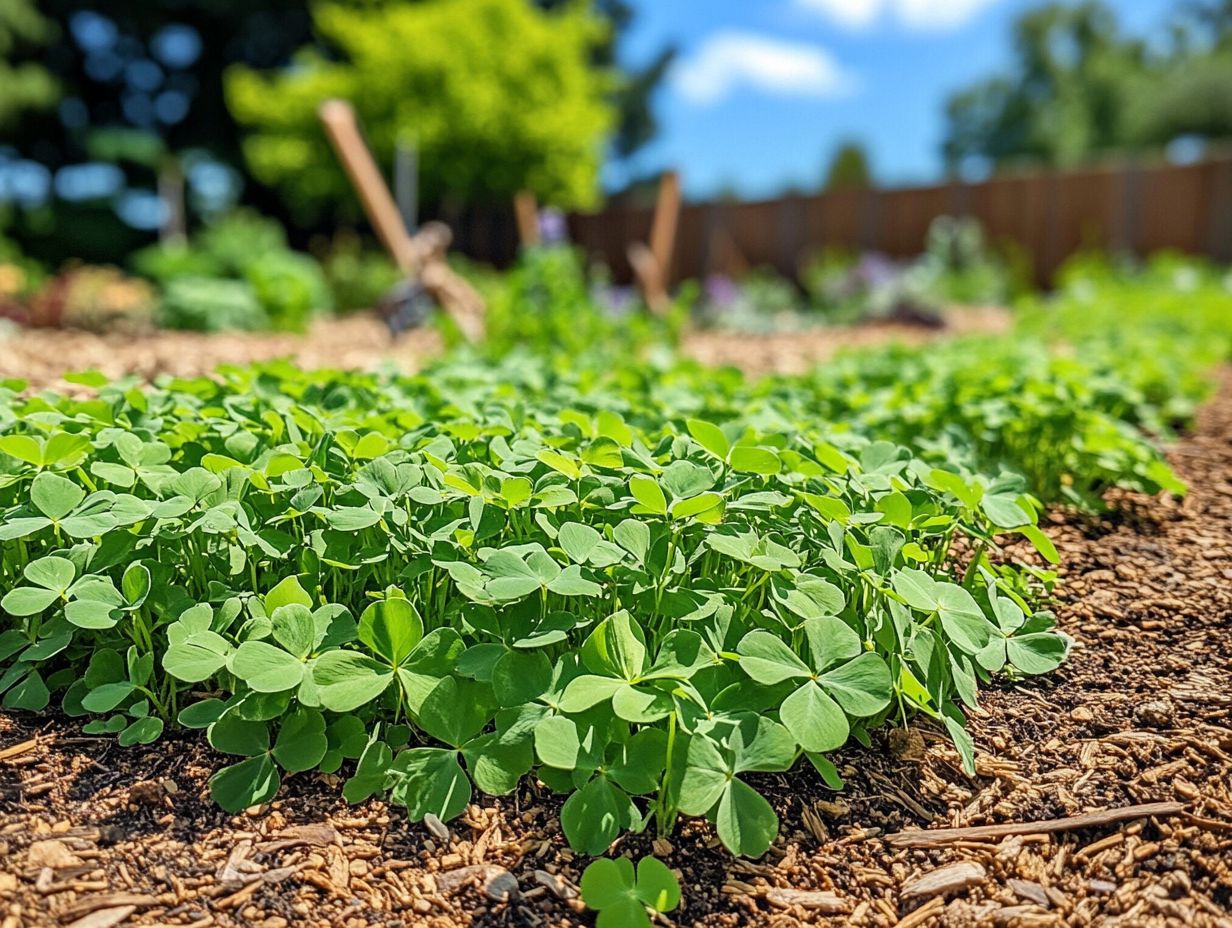
Selecting the right types of cover crops is essential for maximizing benefits in drought gardening. Consider options like winter wheat, winter rye, and clover; all of which prove particularly effective. For more insights, explore the benefits of drought-resistant gardening.
These cover crops not only enhance soil structure but also improve moisture retention. This makes them invaluable in arid conditions.
For example, winter wheat thrives in various soil types and contributes organic matter while minimizing erosion. In contrast, winter rye grows quickly and has a deep root system that breaks up compacted soil, making it ideal for heavier soils.
Then there’s clover, a legume that enriches the soil with nitrogen, fostering healthier plant growth.
Integrating these cover crops will make your garden thrive!
How to Incorporate Cover Crops in Your Garden
Incorporating cover crops into your gardening routine requires careful planning and execution. Use agricultural research and effective planting strategies to ensure seamless integration with your existing crops.
It s not just about when to sow those cover crops; it s also about choosing compatible species that enhance the overall ecosystem of your garden.
Techniques such as no-till farming which means not turning the soil over can preserve soil structure and health while promoting moisture retention and nutrient cycling.
Best Practices for Planting and Maintaining Cover Crops
Best practices are essential for planting and maintaining cover crops. They help you make the most of cover crops to keep your soil moist and improve overall garden health, especially in drought conditions.
To harness the benefits these vital crops offer, focus on key aspects such as timing, soil preparation, and post-harvest management.
Implementing a well-timed planting schedule will allow for optimal growth, typically recommended after your primary crop harvest. This ensures your soil remains covered during the off-season.
Preparing the soil with proper tillage techniques can significantly enhance seed-to-soil contact, leading to better germination rates.
After the harvest, effective management practices like crimping or mowing will promote decay and nutrient cycling, enriching your soil structure and supporting your sustainable farming efforts.
Maximizing the Benefits of Cover Crops
To truly maximize the benefits of cover crops, engage in strategic planning that incorporates both crop rotation and companion planting. These practices enhance nitrogen cycling and improve soil health in drought gardening.
By thoughtfully integrating these approaches, you set the stage for a more resilient and productive garden.
Companion Planting and Crop Rotation Strategies
Companion planting and crop rotation strategies are crucial for maximizing the benefits of cover crops. They help nurture soil health and foster biodiversity in drought gardening.
Thoughtfully pairing specific plants cultivates a harmonious environment where beneficial insects flourish, pests are kept at bay, and nutrient uptake reaches its peak. For example, planting legumes alongside corn boosts nitrogen levels in the soil.
Rotating your crops helps prevent the accumulation of pests and diseases that often plague gardens when the same plants are grown year after year. Research indicates that these practices improve soil quality and promote a balanced ecosystem.
Challenges and Solutions for Using Cover Crops in Drought Gardening
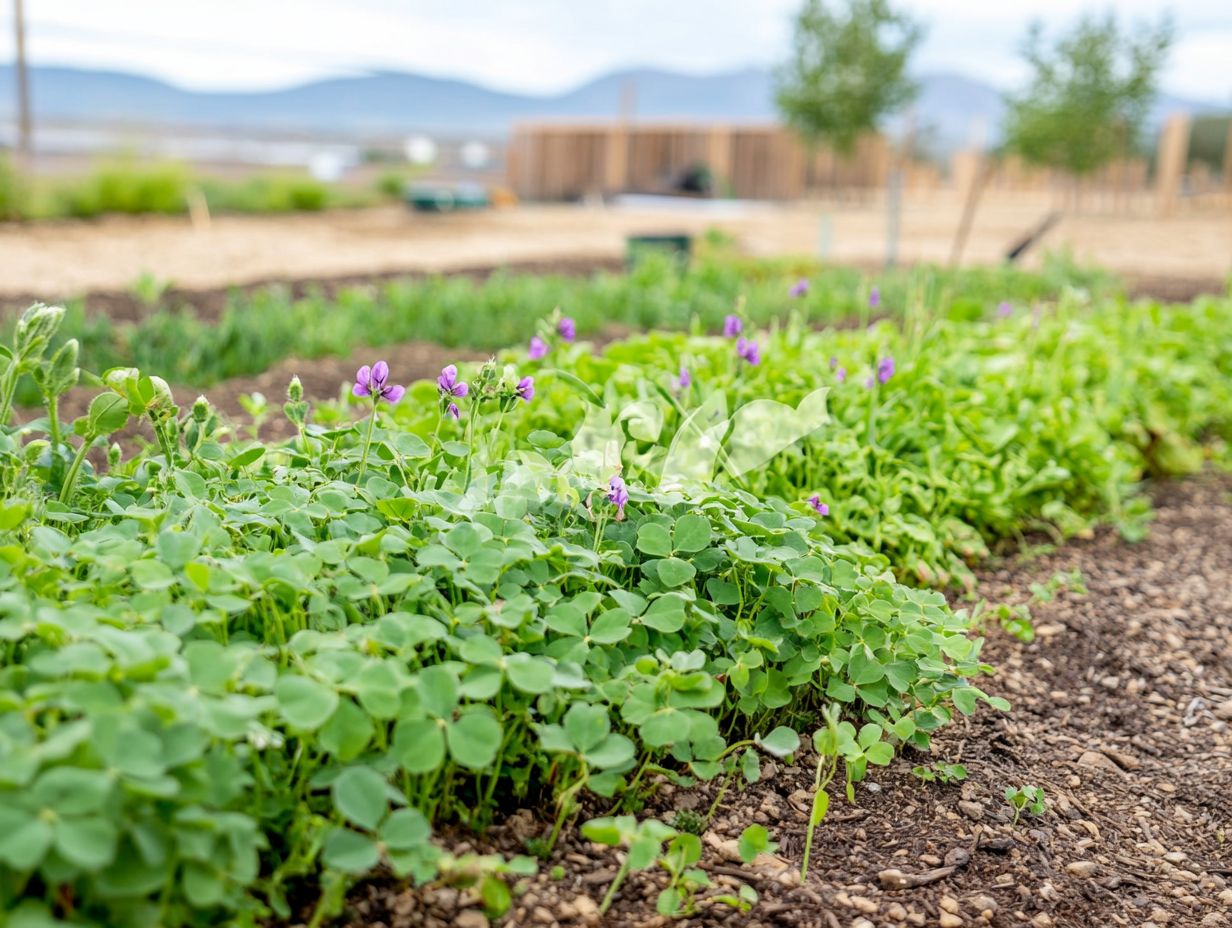
While the advantages of incorporating cover crops in drought gardening are numerous, challenges related to seed selection, timing, and integration with your existing crops may arise.
Addressing these issues requires careful consideration and a commitment to ongoing agricultural research to find effective solutions.
Start using cover crops today to protect your garden from drought conditions!
Overcoming Common Obstacles
Overcoming common obstacles associated with cover crops in drought gardening is essential for ensuring sustainable farming practices and optimizing your crop yield. Understanding the role of mulch in drought gardening can also contribute significantly to your success.
You may encounter challenges such as limited water availability, soil moisture, soil compaction, and selecting the right cover crops that align with your local climate and soil conditions. To address these issues, consider integrating drought-resistant cover crops; they require less moisture while effectively maintaining soil health.
Regular soil testing and adjusting nutrient levels can significantly enhance the effectiveness of your cover crops, enabling them to thrive even under less-than-ideal conditions.
Employing no-till farming techniques can further improve resource utilization and minimize competition, creating a more productive environment. Connecting with Farmers For Soil Health to share knowledge and experiences can provide you with invaluable insights into effective cover crop management strategies.
For more information on cover crop benefits, discover insights from experts like Jack Davis and Mike Ostlie about the best agriculture practices for your region. Additionally, consider checking resources from South Dakota State University and Purdue University.
Frequently Asked Questions
What are cover crops and how can they benefit my garden?
Cover crops are plants grown specifically to improve soil health and quality. They act as a living mulch, protecting the soil from evaporation and retaining moisture. Incorporating crop rotation strategies with cover crops can enhance soil structure and promote erosion control.
Which cover crops are best for drought gardening?
Some cover crops that are ideal for drought gardening include legumes like clover and vetch, as well as grasses like ryegrass and wheat. These plants have deep root systems that help them access water deeper in the soil, making them perfect for using rain barrels for drought gardening.
How do I incorporate cover crops into my drought garden?
The best way to incorporate cover crops into your drought garden is to plant them in between rows of vegetables or in areas that are not being used. Additionally, consider using native plants in drought gardening by utilizing a cover crop mix, which combines different types of plants that work together to improve soil health.
Do cover crops require a lot of water?
No, cover crops do not require a lot of water in a drought garden. In fact, they are great for water conservation as they help retain moisture in the soil. However, it is important to water them regularly during their establishment period to encourage strong root growth.
How often should I plant cover crops in my drought garden?
Cover crops can be planted multiple times throughout the year, depending on your climate and growing season. It’s best to plant them at least once a year.
You can also sow them between growing seasons. This keeps your soil covered and healthy!
Can I use cover crops as a source of food in my drought garden?
Yes! Some cover crops, like legumes and grains, can be grown for food as well as improving soil health. Check which cover crops you can eat and learn how to prepare them properly.


